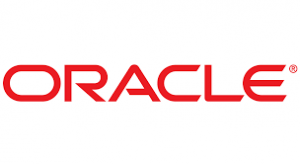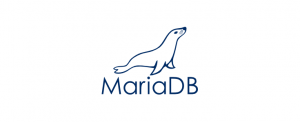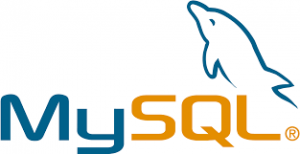Amazon Relational Database (RDS) refers to a cloud infrastructure allowing the creation and maintenance of relational databases.
It also helps in management tasks like migration, backup, recovery & patching.
Furthermore, the RDS instance is employed to spice up your database query bandwidth.
Features of Amazon RDS
- Inexpensive – As we only buy the consumed resources with no long-term commitment. So, it is inexpensive.
- Scalable – With the AWS management console or RDS-specific API, we can increase or decrease the RDS requirements within minutes.
- Backup – Additionally, Amazon RDS backups everything within the database and also provides an automatic backup feature.
- Secure – It also provides complete control over the network to access databases and related services.
- Host replacement – For reference, just in case of a failure of RDS hardware, then it’ll get replaced automatically by Amazon.
Benefits of AWS RDS
- Reduced Administration Burden – The database can be deployed easily from project creation to implementation through the use of RDS.
- Cost-effective – You just pay for what you use, and nothing more. No upfront payment is required, just the monthly usage payment.
- Security – Using AWS Key Management Service (KMS), you can create encryption keys for maintaining security and authorized access to your database.
- High Availability and Durability – The automated recovery feature of RDS enables point-in-time recovery for your database instance.
- Scalability – Moreover, it just takes a few minutes to scale your infrastructure up or down, and you can scale up to a maximum of 32 vCPUs and 244 GiB.
- Free Tier – Therefore, In addition to the above benefits AWS also gives you a free tier usage of Amazon RDS for 750 hours/month for 12 months.
Database Engines that are managed by RDS
![]()
Amazon Aurora is a relational database engine built by Amazon.
That blends high-end commercial database speed and reliability with the flexibility and cost-effectiveness of open-source databases.

PostgreSQL is yet another open-source database management system that uses SQL to access the data. SQL Server is a Relational Database Management System, which was developed by Microsoft in 2005.
SQL Server is a Relational Database Management System, which was developed by Microsoft in 2005.
Amazon RDS for SQL Server makes it easy to set up, operate, and scale SQL Server deployments in the cloud.
In addition, with Amazon RDS, you can deploy multiple editions of SQL Server.
Oracle is an object-relational database management system that was developed by Oracle Inc.
MariaDB is a community development fork of MySQL DBMS. However, The reason for its fork was the concern over the acquisition of Oracle over MySQL
My SQL is the world’s most popular open-source relational database. Amazon RDS makes it easy to set up, operate, and scale MySQL deployments in the cloud.
With Amazon RDS, you can deploy scalable MySQL servers in minutes with cost-efficient and resizable hardware capacity.
Cost of Amazon Relational Database Service
In RDS, the Billing depends on the subsequent criteria:
- Instance Class – Pricing depends on the consumption class of the DB Instance.
- Running Time – Pricing depends on the instance hour, like one instance running per hour.
- Storage – The bill is calculated based on a storage capacity plan (mainly in GBs).
- I/O Requests – It include the total no. of storage I/O requests made during a billing cycle.
- Backup Storage – there are no additional charges for backup storage up to 100% of the database, free just for active DB Instances.
Amazon RDS provides the subsequent purchasing options to enable you to optimize your costs as per your needs:
- On-Demand Instances – Pay by the hour for the DB instance hours that you simply use. Pricing depends on a per-hour basis, but bills are calculated right down to the second and show times in decimal form. Likewise, RDS usage is now billed in a second increment, with a minimum of 10 minutes.
- Reserved Instances – Reserve a DB instance for a one-year or three-year term and obtain a big discount compared to the on-demand DB instance pricing. With Reserved Instance usage, you’ll launch, delete, start, or stop multiple instances within an hour and obtain the Reserved Instance benefit for all of the instances.
A free-tier policy with Amazon
AWS has an amazing free tier policy so that the user can use the service first and then do the necessary.
Similarly, it offers a free tier policy for AWS RDS, which includes the following benefits:
- 750 hours of Amazon RDS usage in single-AZ for db.t2.micro instance, every month for one year from signup.
- 20 GB of DataBase Storage: any combination of General Purpose (SSD) or Magnetic storage.
- 10 million IOs.
- 20GB of backup storage.
Regions and Availability Zones
- AWS resources are stored in highly accessible data centers, located in different parts of the world. This “area” is called the region.
- Each region has multiple availability zones (AZs) which are distinct locations, designed to be isolated from the failure of other AZs.
Muti-AZ Deployment in AWS
It provides a hot standby RDS replica in a different Availability Zone, automatically replacing the primary database during maintenance, failure, or AZ outage.
Conclusion
We spoke about Amazon Relational Database because it is widely accessible, scalable, and offers a broad range of security features.
Therefore, It also helps the company to develop new ways to better serve its clients.
Furthermore, Amazon RDS is a feature-rich & mature AWS service, which makes it easy for even less tech-savvy companies to operate their relational databases.
In case of any help or query, please contact us or raise a ticket.





Be the first to comment.